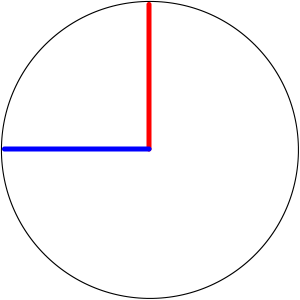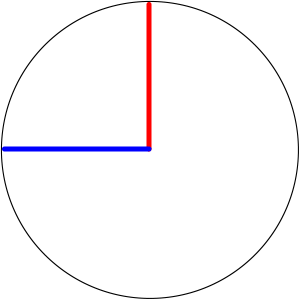The interference between photons and neutrinos can causally induce the construction of an electron.
In The Dutch Paradigm, the electron is not regarded as a fundamental particle; instead, it is viewed as a construct of a photon and a neutrino


The electromagnetic manifestations of the photon and the neutrino initiate through interference a spatial arrangement of the entities relative to each other.
Again, we have to recall that all these photons and neutrinos went through the same event of the Big Bang, which resulted at the start of period 3 in entities with properties as
- The same time delay: 1 TPlanck
- The same propagation speed: c
- The same amplitude of the EM manifestations
- The same start frequency of the EM manifestations
- The same clock frequency for the update of values of the EM manifestations
A model of the electron, as well as an animation of the sequence of interference steps to construct the electron, will be used for explanation. For the animation, see www.thedutchparadigm.org .
In particle physics, modeling requires creativity. It involves developing a visual representation of entities that are not directly observable. For instance, photons and neutrinos do not have spatial dimensions and can only be detected through their electromagnetic interactions. While these interactions themselves are not visible or tangible, they do manifest distinct spatial properties. These phenomena interact with one another, leading to changes in their characteristics and behaviors.
The specific spatial rearrangement of the manifestations under interference is unique to the construct, and this arrangement is ultimately observable.
The model for the electron is in the animation:

The interference between a photon’s free electric quantum and a neutrino’s magnetic property causes the photon to orbit around the neutrino. This orbit has a gamma frequency and travels at the speed of light.
The plane of this orbit is perpendicular to the direction in which the electron is propagating. The magnetic properties, affected by this interference, can be simplified in a graphical representation. Additionally, the photon’s electric manifestation also moves in the direction of propagation. As a result of the magnetic system interacting with the cardioid system, the electric manifestation of the photon becomes asymmetric.
In action, as per animation:
This interference is possible due to the availability of the quant of free electric energy of the photon. It is the “particle” manifestation identified by regular science as particle/wave behavior of the photon.
The animation of the photon as given in this chapter is, therefore, in fact, slightly different because of the phase shift between the electric and magnetic manifestations.
The phase shift represents the free electric energy.
From the start of period 3, a spatial encounter of a photon and a neutrino under specific spatial conditions became consequential. Whenever such an event occurred, then the quant of free electric energy of a photon could interfere during 1 TPlanck with the magnetic manifestation of the neutrino.
The result of such an encounter is the forming of the construct electron.
A simplified visualization of this sequence of events is in the following animation.
The interaction between the free electric energy of a photon and the magnetic properties of a neutrino induces momentum due to the Lorentz force. This momentum causes the photon, which has no mass and therefore no inertial mass, to rotate in relation to the neutrino. When the rotation reaches 90 degrees, the momentum becomes zero, and the magnetic properties of both the photon and the neutrino combine and interact to produce a combined effect. In this condition, the magnetic properties that balance the electric properties of the photon are asymmetric.
That implies similar consequences for the electric manifestation: it also becomes asymmetric.
The asymmetric electric manifestation of the photon, now part of the electron, alternates in the direction of propagation of the newly formed construct.
Particle physics recognizes the asymmetry of the electron as its ‘electric charge.’
The model of the electron clarifies some additional phenomena:
1. Electron oscillation
The frequency of the photon is about 10¹⁴ Hz higher, and the magnetic manifestation of the photon will help to close the gap of the backlog in magnetic compensation of the neutrino. That induces an oscillation from left-handed to right-handed chirality and reverses at a frequency level within the visible light spectrum.
2. Positron
The electron oscillates between eigenstates of up and down asymmetry; the second state is the positron.
3. Spinor
Whenever an electron is under the interference of Coulomb forces, the oscillation triggers an additional rotation of the construct. This combination of change-over of chirality and is the spinor with rotation.
4. The electric manifestation is quasi-isotropic
When the spinor induces alternation of the construct into rotational behavior, the asymmetrical electric manifestation becomes quasi-isotropic, as seen in the electron shells of an atom.
5. Reduction in speed of the construct electron
The speed of light is the limit for propagation in any direction. The electric manifestation of the photon in the direction of propagation reduces the speed of the construct accordingly.
6. Reduction in frequency of the construct
The combined magnetic manifestation reduces to a level in which the rotational speed of the cardioid is at the speed of light.
7. Free magnetic energy
The reduction in frequency implies a decrease in free energy represented by Δhf. This energy is then converted into free magnetic energy and added to the property of monopolar gravity of the electron.
8. Surface inflation
The magnetic manifestations of the electron are active on a flat surface, perpendicular to the direction of propagation. The interference of the two magnetic manifestations inflates the size of that active surface.
9. Photon/photon interference
The photon orbiting at the speed of light can interfere with external photons, resulting in photonic capture and release.
The newly available electron model enhance our understanding of its role in the environment.
The electron is not a fundamental point particle.
